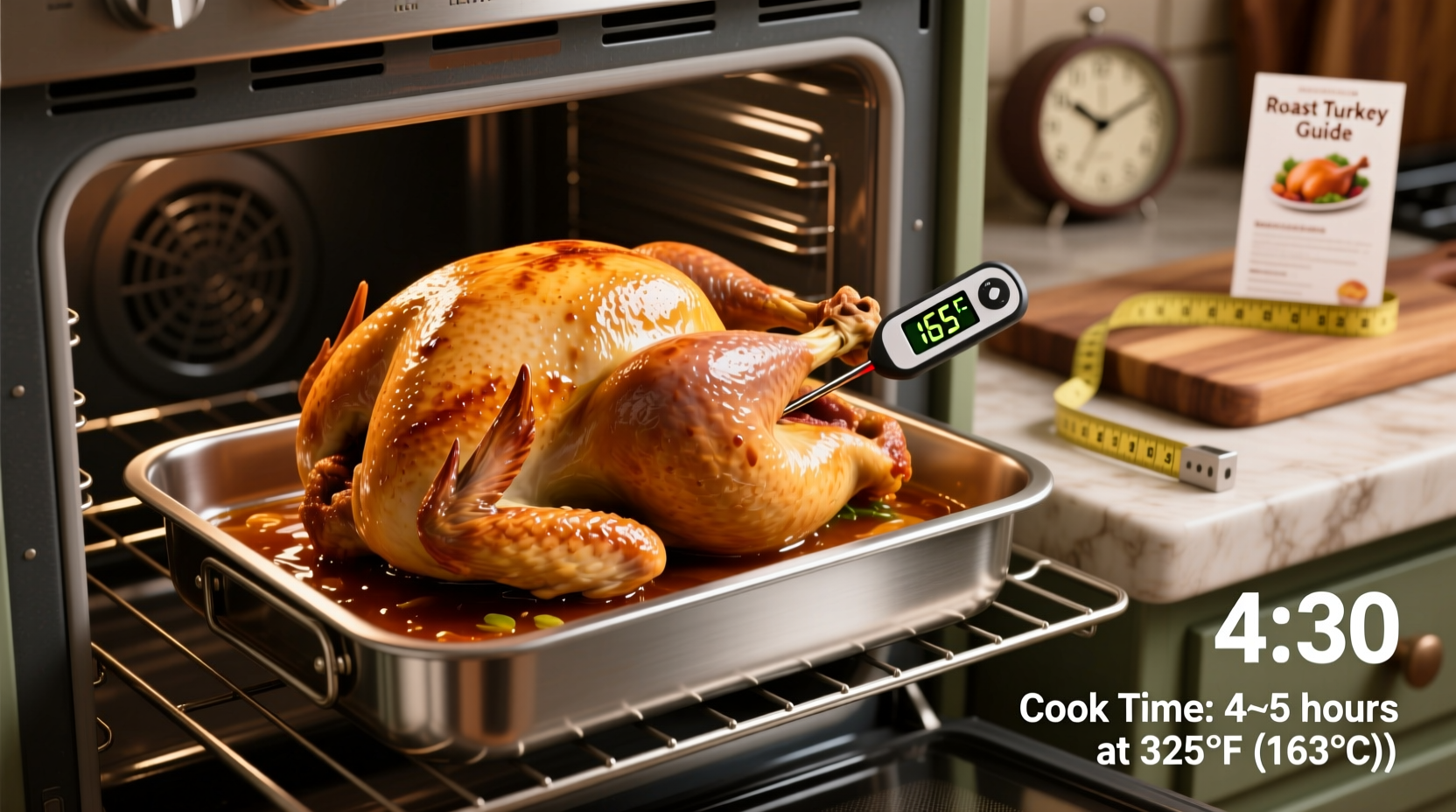
The Complete Guide to Roasting a 20-Pound Turkey
Nothing says holiday celebration quite like a perfectly roasted turkey, but cooking a 20-pound bird requires precise timing and technique. Get it right, and you'll have moist, flavorful meat that impresses your guests. Get it wrong, and you risk serving dry turkey or—worse—undercooked poultry that could make people sick. This guide delivers exactly what you need to know for flawless results every time.
Why Proper Turkey Cooking Time Matters
Cooking a large turkey isn't just about setting a timer and hoping for the best. Undercooked turkey carries serious food safety risks, while overcooked turkey becomes dry and unappetizing. The USDA Food Safety and Inspection Service emphasizes that poultry must reach 165°F internally to destroy harmful bacteria like salmonella and campylobacter. For a 20-pound turkey, this requires careful monitoring throughout the cooking process.
| Turkey Weight | Unstuffed Roasting Time | Stuffed Roasting Time | Minimum Internal Temp |
|---|---|---|---|
| 16-20 lbs | 4-4½ hours | 4¼-5¼ hours | 165°F |
| 20-24 lbs | 4½-5 hours | 4¾-5¾ hours | 165°F |
Step-by-Step Cooking Process for a 20-Pound Turkey
Preparation: The Critical First Steps
Proper preparation determines your turkey's success more than any other factor. Start by ensuring your turkey is completely thawed—this takes approximately 4-5 days in the refrigerator for a 20-pound bird. Rushing this step leads to uneven cooking. Pat the turkey dry thoroughly before seasoning; moisture on the skin prevents proper browning.
Professional chefs recommend a simple approach: rub the skin with softened butter or oil, then season generously with salt and pepper. Avoid overcomplicating with too many spices—let the natural turkey flavor shine. If stuffing the turkey, remember that this adds 20-30 minutes to the total cooking time and requires extra care to ensure both the stuffing and turkey reach safe temperatures.
Roasting: Timing and Temperature Control
Preheat your oven to 325°F—this moderate temperature ensures even cooking without burning the exterior. Place the turkey breast-side up on a rack in a roasting pan. For more accurate timing, use this formula: 13-15 minutes per pound for an unstuffed turkey. For a 20-pound bird, that's 4 hours 20 minutes to 5 hours.
During cooking, resist the urge to open the oven frequently—each peek drops the temperature significantly. Basting is optional; many professional chefs skip it as it doesn't significantly improve moisture and prolongs cooking time. If you do baste, do it quickly and only 2-3 times during the last 1½ hours of cooking.
Safety First: Verifying Proper Doneness
Timing provides only a rough estimate—the only reliable method to determine doneness is with an instant-read thermometer. Insert it into three critical areas:
- Thickest part of the breast (avoiding bone)
- Innermost part of the thigh
- Center of any stuffing (if used)
All areas must register 165°F for safe consumption. The USDA's Food Safety and Inspection Service states that "color is not a reliable indicator of doneness" for poultry—even meat that appears slightly pink can be safe if it reaches the proper internal temperature.
The Essential Resting Period
Never skip the resting period! After removing the turkey from the oven, let it rest for 20-30 minutes before carving. This crucial step allows the juices to redistribute throughout the meat, resulting in significantly moister turkey. Tent loosely with foil to keep it warm during this time.
Troubleshooting Common Turkey Problems
Dry breast meat: This happens when the breast cooks faster than the darker thigh meat. Try positioning the turkey with the breast side slightly elevated or covering just the breast area with foil during the last hour of cooking.
Undercooked thighs: If the breast reaches 165°F but the thighs haven't, continue roasting while monitoring closely. The breast will remain safe as long as you don't exceed 170°F, which causes significant moisture loss.
Uneven browning: Rotate the pan 180 degrees halfway through cooking for more even heat distribution in home ovens, which often have hot spots.
Advanced Tips for Perfect Results
Dry brining: For exceptionally flavorful and moist turkey, try dry brining 2-3 days before cooking. Rub 1 tablespoon of kosher salt per 5 pounds of turkey under the skin and on the surface, then refrigerate uncovered. This technique enhances flavor and helps retain moisture better than wet brining.
Temperature monitoring: Consider using a wireless probe thermometer that stays in the turkey throughout cooking. This eliminates guesswork and prevents unnecessary oven openings.
Cooking alternatives: For more even cooking, some chefs recommend spatchcocking (removing the backbone and flattening) your turkey. This reduces cooking time by nearly half and creates more uniform doneness, though it changes the traditional presentation.
Food Safety Reminders
Remember these critical food safety guidelines from the USDA:
- Never thaw turkey at room temperature—always in the refrigerator, under cold running water, or in the microwave
- Wash hands and surfaces thoroughly after handling raw poultry
- Refrigerate leftovers within 2 hours (1 hour if room temperature exceeds 90°F)
- Consume leftovers within 3-4 days or freeze for longer storage











 浙公网安备
33010002000092号
浙公网安备
33010002000092号 浙B2-20120091-4
浙B2-20120091-4